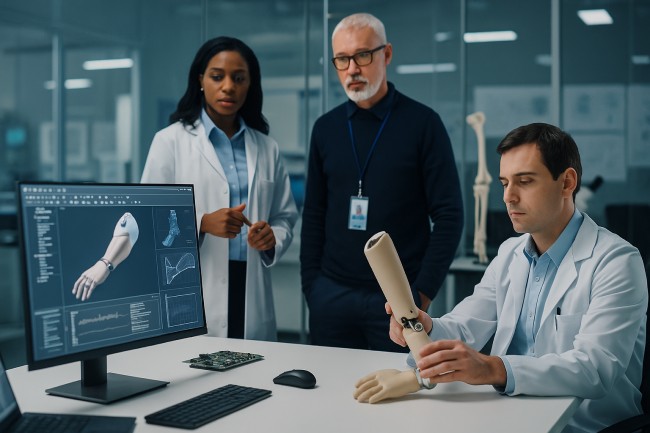Accelerating Product Launches in the Medical Field

The medical technology industry faces unprecedented pressure to bring life-saving innovations to market faster than ever before. With patient lives hanging in the balance and competition intensifying, the traditional lengthy development cycles that once defined healthcare product launches are no longer sustainable.
Accelerating medical product launches requires a delicate balance between speed and safety, innovation and regulation. Companies that master this balance don’t just gain competitive advantages—they potentially save lives by getting critical medical solutions to patients sooner. The challenge lies in navigating complex regulatory frameworks, ensuring rigorous testing protocols, and maintaining the highest safety standards while compressing timelines.
Understanding the unique constraints and opportunities within medical product development is essential for any organization looking to reduce time-to-market without compromising quality or compliance.
Understanding the Medical Product Development Landscape
Medical product development operates under significantly different constraints than consumer goods or software products. Regulatory bodies like the FDA require extensive documentation, clinical trials, and safety validation that can extend development timelines by months or years.
The stakes are inherently higher in medical technology. A rushed product launch could result in patient harm, regulatory penalties, or permanent damage to a company’s reputation. However, excessive caution can also have devastating consequences, preventing patients from accessing potentially life-saving treatments.
Modern medical device development companies are finding ways to accelerate their processes while maintaining rigorous safety standards through strategic planning, advanced technologies, and streamlined regulatory approaches.
Strategic Planning for Faster Time-to-Market
Early Regulatory Engagement
Engaging with regulatory bodies early in the development process can prevent costly delays later. Companies that establish communication with the FDA or other relevant authorities during the design phase can identify potential roadblocks before they become major obstacles.
Pre-submission meetings and Q-Sub processes allow developers to clarify regulatory expectations, discuss study protocols, and receive guidance on submission requirements. This proactive approach eliminates guesswork and reduces the likelihood of rejection or requests for additional information.
Parallel Development Processes
Traditional medical product development follows a sequential approach: design, develop, test, submit for approval, then manufacture. Forward-thinking companies are implementing parallel processes where multiple phases occur simultaneously.
For example, manufacturing scale-up can begin while clinical trials are ongoing, assuming positive results. Marketing materials and distribution channels can be prepared during the regulatory review period. This parallel approach can shave months off the total timeline.
Leveraging Technology for Speed
Digital Prototyping and Simulation
Advanced computer modeling and digital twins allow companies to test products virtually before creating physical prototypes. This technology can identify design flaws early, reducing the number of physical iterations required.
Finite element analysis, computational fluid dynamics, and other simulation tools help predict how medical devices will perform under various conditions. These digital tests can often satisfy some regulatory requirements, reducing the need for extensive physical testing.
Agile Development Methodologies
Borrowing from software development, medical companies are adopting agile methodologies that emphasize iterative development, continuous feedback, and rapid adaptation to changing requirements.
Cross-functional teams work in short sprints, allowing for quick course corrections and continuous improvement. This approach contrasts sharply with traditional waterfall methods that could take years to identify and correct fundamental design issues.
Streamlining Clinical Trials
Adaptive Trial Designs
Adaptive clinical trials allow modifications to study protocols based on interim results without compromising the trial’s integrity. These designs can reduce sample sizes, eliminate ineffective treatment arms, and accelerate the path to approval.
Master protocols that test multiple treatments simultaneously can also significantly reduce timelines compared to separate individual studies.
Real-World Evidence Integration
Regulatory agencies increasingly accept real-world evidence alongside traditional clinical trial data. Electronic health records, patient registries, and post-market surveillance data can supplement clinical trials and potentially reduce the burden of proof required for approval.
This shift allows companies to leverage existing data sources and reduce the time and cost associated with extensive clinical studies.
Building Collaborative Networks
Successful medical product launches often result from strategic partnerships rather than isolated development efforts. Collaborations with research institutions, healthcare providers, and other medical device development companies can provide access to specialized expertise, testing facilities, and regulatory knowledge.
Academic medical centers offer clinical expertise and patient populations for testing, while established medical device companies can provide regulatory experience and distribution networks. These partnerships allow smaller companies to accelerate their development timelines by leveraging existing infrastructure and expertise.
Quality Management Systems for Speed
Implementing robust quality management systems from the beginning of development, rather than as an afterthought, can significantly accelerate regulatory approval processes. Companies with mature quality systems experience fewer regulatory questions, faster reviews, and higher approval rates.
Modern quality management systems incorporate risk management principles that identify and mitigate potential issues early in development. This proactive approach prevents problems that could cause significant delays later in the process.
Taking Action for Faster Medical Product Launches
Accelerating medical product launches requires a fundamental shift from traditional development approaches to more strategic, technology-enabled, and collaborative methods. Companies that embrace early regulatory engagement, parallel development processes, and advanced technologies will find themselves better positioned to bring life-saving innovations to market quickly and safely.
The medical technology landscape continues to evolve, with regulatory agencies becoming more receptive to innovative approaches and new technologies. Organizations that adapt their development strategies to leverage these changing dynamics will gain significant competitive advantages while ultimately serving patients better through faster access to innovative medical solutions.



